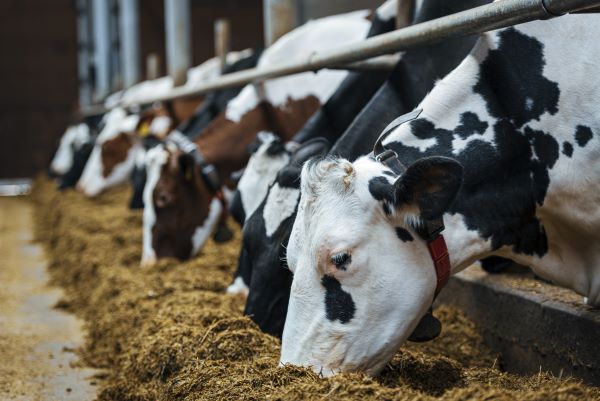Finding the Right Harvest Opportunity for First Crop Alfalfa
May 25, 2023

Spring is in the air and the fields are starting to fill with green. The words in the back of everyone’s mind are: first crop. Time to get the equipment out, cleaned off, tuned-up and ready to roll. Whether you are doing baleage, haylage, or dry hay, knowing what quality you are aiming for will help guide you on what temperature to harvest at.
First cutting alfalfa forage quality changes the most rapidly. Therefore, it is important to know what quality you are targeting going into the season. Harvest losses tend to increase as moisture decreases in hay crop, running 10% average for haylage and 20 – 25% for dry hay. It is critical to consider how to minimally move alfalfa prior to harvesting, targeting at least 40% moisture before raking, and looking to harvest hay at the highest moisture to avoid harvest losses while avoiding storage losses.
The other opportunity to consider for first crop is it has the greatest neutral detergent fiber digestibility than subsequent crops by 3.5 percentage units and greatest dry matter yield. However, after hitting highest digestibility it will decrease in quality at a faster rate comparatively. After hitting the highest quality and digestibility, a 5-day delay in first-cut alfalfa is 20 points lower in relative forage quality (RFQ). Keep in mind the age of the alfalfa stand as well. Older stands could wait for first cutting to minimize stress in latter cuttings.
Quality alfalfa for lactating diets is 180 RFQ. Again, the quality being targeted depends on feeding rate of alfalfa as a percent of forage and in the total diet, and what role it plays in the dairy diet (e.g. protein, fiber for rumen mat, etc.). To make 180 RFQ, targeting 24 inches for first crop is ideal, where 150 RFQ is closer to 30 inches in height.
Work with your nutritionist and agronomist to make sure fields are being monitored for the right harvest opportunity. Remember, the timing of first crop sets-up the entire alfalfa growing season and forages to be fed.
First cutting alfalfa forage quality changes the most rapidly. Therefore, it is important to know what quality you are targeting going into the season. Harvest losses tend to increase as moisture decreases in hay crop, running 10% average for haylage and 20 – 25% for dry hay. It is critical to consider how to minimally move alfalfa prior to harvesting, targeting at least 40% moisture before raking, and looking to harvest hay at the highest moisture to avoid harvest losses while avoiding storage losses.
The other opportunity to consider for first crop is it has the greatest neutral detergent fiber digestibility than subsequent crops by 3.5 percentage units and greatest dry matter yield. However, after hitting highest digestibility it will decrease in quality at a faster rate comparatively. After hitting the highest quality and digestibility, a 5-day delay in first-cut alfalfa is 20 points lower in relative forage quality (RFQ). Keep in mind the age of the alfalfa stand as well. Older stands could wait for first cutting to minimize stress in latter cuttings.
Quality alfalfa for lactating diets is 180 RFQ. Again, the quality being targeted depends on feeding rate of alfalfa as a percent of forage and in the total diet, and what role it plays in the dairy diet (e.g. protein, fiber for rumen mat, etc.). To make 180 RFQ, targeting 24 inches for first crop is ideal, where 150 RFQ is closer to 30 inches in height.
Work with your nutritionist and agronomist to make sure fields are being monitored for the right harvest opportunity. Remember, the timing of first crop sets-up the entire alfalfa growing season and forages to be fed.